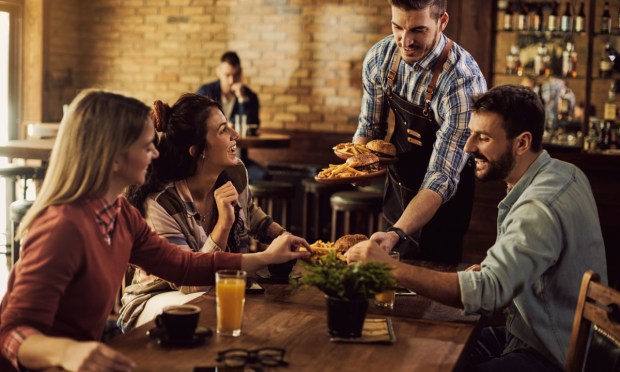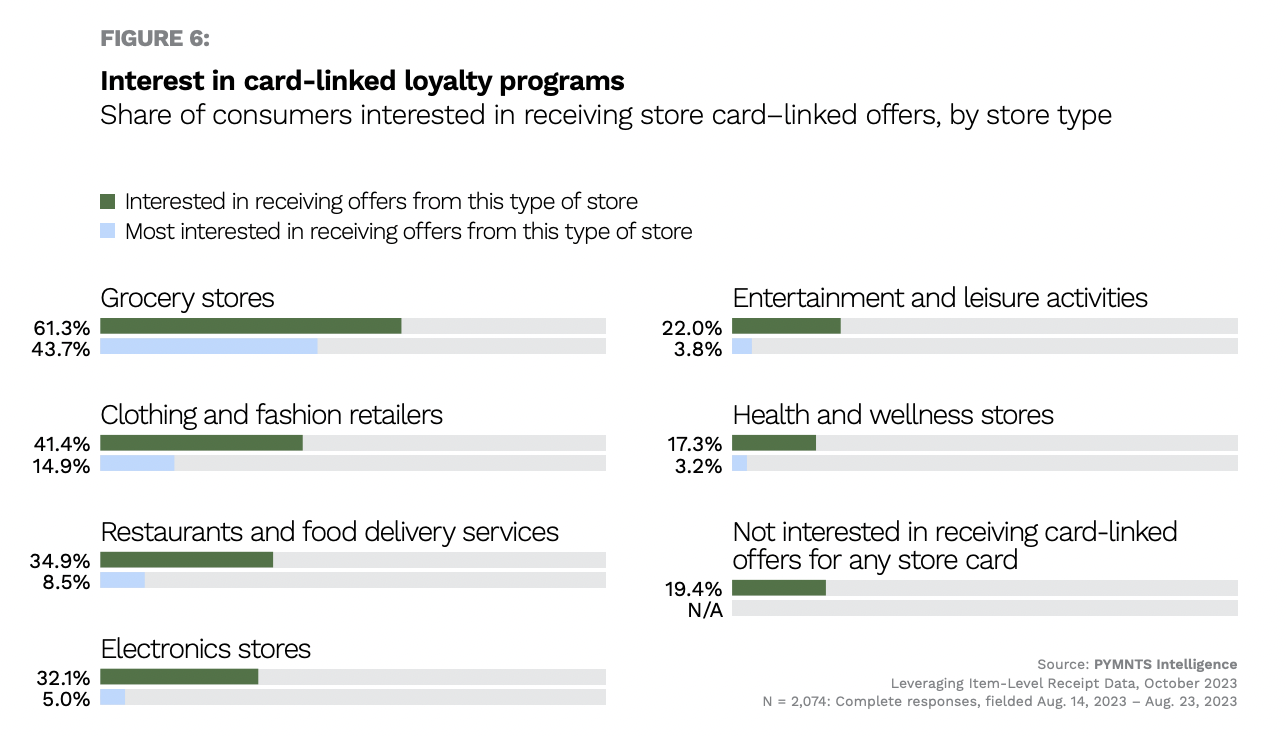1 in 3 Restaurant Customers Want Card-Linked Rewards

As restaurants and aggregators alike look to drive adoption, PYMNTS Intelligence suggests that card-linked offers can go a long way.
By the Numbers
The October report “Leveraging Item-Level Receipt Data: How Personalized Card-Linked Offers Drive Store Card Usage,” a PYMNTS Intelligence and Banyan collaboration, draws from a census-balanced survey of more than 2,000 U.S. consumers to learn about their interest in using card-linked rewards programs.

The results reveal that 35% of consumers are interested in receiving card-linked offers from restaurants and food delivery services. Plus, 9% cite this as the type of card-linked reward they are most interested in receiving.
In fact, the opportunity for restaurants goes even deeper than that, according to the September installment of the “Leveraging Item-Level Receipt Data” series, “How Card-Linked Offers Drive Customer Loyalty,” also done with Banyan and drawing from a July survey of more than 2,000 U.S. consumers.
The study found that 53% of those who are likely to use a product-specific card-linked offer program in the next three months — or 44% of consumers overall — are very or extremely likely to do so for restaurant purchases.
A Deeper Dive
These kinds of offerings can be key, as restaurants continue to see their customers’ dining decisions impacted by ongoing financial pressures.
According to the PYMNTS Intelligence study “The Credit Economy: How Consumers Are Approaching Holiday Spending and Travel,” created in collaboration with i2c, which is based on responses from more than 3,300 U.S. consumers, 79% of participants say they plan to cut back on buying food from restaurants this season due to concerns about holiday spending.
Moreover, the report “New Reality Check: The Paycheck-to-Paycheck Report – The Saving Deep Dive Edition,” a PYMNTS Intelligence and LendingClub collaboration, finds that, on average across the more than 3,600 U.S. consumers surveyed, people have seen their savings decreased by 7.1% since 2021.
